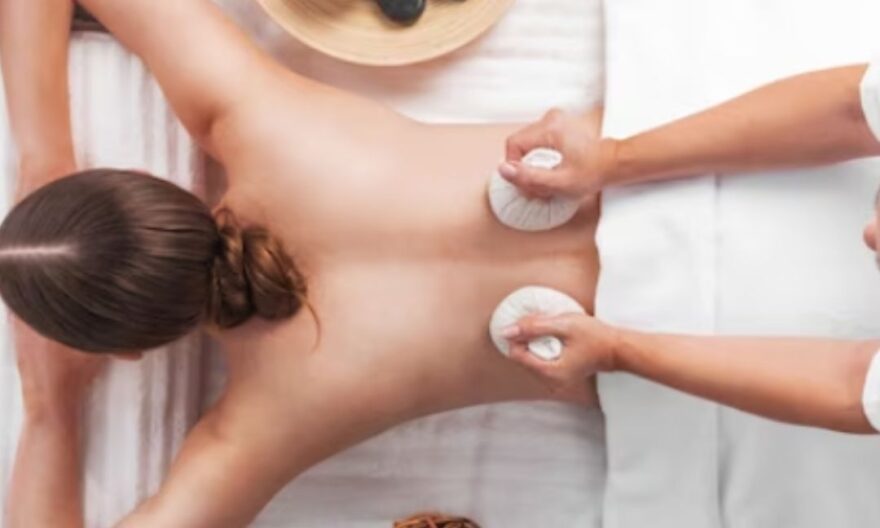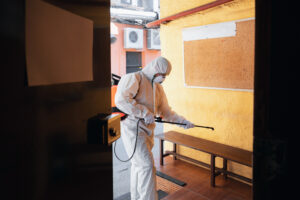
In the buzzing about of modern life, finding snapshots of tranquility and relief turns out to be progressively critical. One old practice that has endured for the long haul in advancing relaxation and well-being is the art of foot and body massage.
Understanding Foot and Body Massage:
Foot and body massage is something beyond a luxury; it’s a holistic approach to well-being and wellness. This type of massage targets explicit pressure points on the feet and body, planning to deliver tension, improve circulation, and advance by and large relaxation.
Foot Massage Therapy:
The feet are a microcosm of the whole body, each part associated with explicit organs and systems. Foot massage therapy, otherwise called reflexology, includes applying pressure to explicit points on the feet to animate corresponding areas in the body. This technique is established in the belief that the body’s energy, or Qi, flows through meridians, and by controlling explicit points, balance and harmony can be restored.
Advantages of Foot Massage Therapy:
Stress Reduction:
Digging deeper into the domain of stress reduction through foot massage therapy, it’s fundamental to understand the multifaceted organization of nerve endings implanted in the feet. The feet house a complicated snare of sensory receptors and nerve points, unpredictably associated with the central nervous system. At the point when pressure is applied skillfully to explicit areas during a foot massage, these nerve endings communicate signs to the mind, setting off the arrival of neurotransmitters like serotonin and dopamine.
Serotonin, frequently alluded to as the “feel-good” neurotransmitter, assumes a pivotal part in directing mood and diminishing stress levels. Dopamine, one more neurotransmitter related to pleasure and reward, adds to the general sense of well-being. Thus, a well-executed foot massage gives physical relief to tired feet as well as goes about as an impetus for a fountain of neurochemical reactions, advancing a significant relaxation reaction all through the whole body. This amicable interplay of tactile stimulation and neural communication makes a peaceful state of mind, really lessening stress and cultivating a deep sense of calm.
Improved Circulation:
The idea of improved circulation in foot massage therapy reaches beyond the quick solace of the feet. As pressure is applied to explicit points, blood vessels in the feet widen, improving the flow of blood to these areas. This limited stimulation has a far-reaching influence, emphatically impacting the general circulatory system.
By empowering blood flow in the feet, foot massage therapy works with the effective vehicle of oxygen and nutrients to cells all through the body. Improved circulation plays a significant part in keeping up with the strength of vital organs, supporting the safe system, and helping with the end of poisons. The rhythmic manipulation of the feet during a massage session revitalizes tired muscles as well as advances ideal vascular function, adding to a holistic sense of vitality and well-being.
Pain Relief:
In the domain of pain relief through foot massage therapy, the center movements to a significant effect on persistent conditions like headaches, back pain, and arthritis. The feet act as a microcosm of the whole body, with different pressure points corresponding to explicit organs and systems. Targeted foot massage can successfully reduce pain by setting off the arrival of endorphins, the body’s natural painkillers.
Endorphins go about as neurotransmitters that tight spot the cerebrum’s sedative receptors, decreasing the impression of pain and making a sense of happiness. As skilled hands manipulate the feet, these endorphins flood the system, offering relief to people experiencing persistent pain conditions. Besides, the arrival of endorphins adds to a general sense of well-being, making foot massage a therapeutic intercession for pain management as well as a holistic approach to emotional and physical harmony.
Body Massage:
Body massage includes the manipulation of soft tissues and muscles to improve physical and mental well-being. The therapist utilizes different techniques, including kneading, tapping, and stretching, to loosen up tense muscles and advance a sense of general well-being.
Muscle Relaxation:
Massage therapy, with its multifaceted approach, arises as a strong partner in advancing muscle relaxation. Beyond the relieving vibe of a massage room and the aromatic oils, the therapeutic touch of a skilled massage therapist assumes a critical part in delivering tension and knots inside the muscles. The manipulation of soft tissues through different techniques, for example, kneading and rolling, unwinds tight muscle filaments, permitting them to get back to a more natural and relaxed state.
Generally, the art of massage targets the physical manifestations of muscle tension as well as dives into the basic causes. By tending to strong knots and snugness, people experience a significant sense of relief, taking into consideration expanded adaptability and scope of movement. The therapeutic touch of a massage therapist can unwind the metaphorical knots that stress and daily activities tie inside our muscles, giving a pathway to enhanced physical well-being.
Improved Sleep:
The positive effect of massage on sleep designs is a well-reported and valued part of this therapeutic practice. As the body capitulates to the rhythmic and gentle strokes of a skilled therapist, an outpouring of physiological reactions is set off. Massage prompts a state of relaxation, in the muscles as well as all through the whole body and mind.
This deep sense of relaxation fills in as a forerunner to a soothing night’s sleep. By lightening stress and lessening the cortisol levels related to tension, massage therapy establishes an environment helpful for a peaceful sleep. Numerous people see that the quality and span of their sleep improve fundamentally after a massage session. The advantages reach beyond the massage table, adding to a general sense of revival that can emphatically influence daily activities and productivity.
Enhanced Mood:
Massage therapy sustains the physical body as well as significantly affects mental and emotional well-being. One of the vital contributors to this emotional uplift is the arrival of endorphins — the body’s natural mood enhancers. As a skilled therapist applies pressure and manipulates soft tissues, the body answers by delivering these feel-good neurotransmitters.
Endorphins go about as natural painkillers as well as incite a sense of elation and well-being.
This raised mood continues beyond the span of the massage, making a supported sense of inspiration and flexibility. Whether looking for relief from daily stressors or battling feelings of tension, the arrival of endorphins through massage therapy offers a holistic and non-medicinal approach to working on emotional state and mental well-being.
Combining Foot and Body Massage:
The consistent joining of foot and body massage addresses an amicable combination of old insight and modern therapeutic techniques, offering a comprehensive approach to relaxation and healing. This holistic methodology revolves around the idea that the body is an interconnected organization, and by all the while tending to explicit points on the feet and utilizing full-body massage techniques, therapists can convey a modified and multifaceted experience.
Foot massage therapy, with its underlying foundations in reflexology, underlines the belief that different pressure points on the feet relate to various organs and systems inside the body. By skillfully controlling these points, therapists can impact the flow of energy and restore balance. At the same time, full-body massage techniques, for example, Swedish or deep tissue massage, work to deliver tension, knots, and stress all through the whole musculature, advancing a sense of by and large well-being.
Also Read:- Best Place To Get Neck And Shoulder Massage in Singapore




